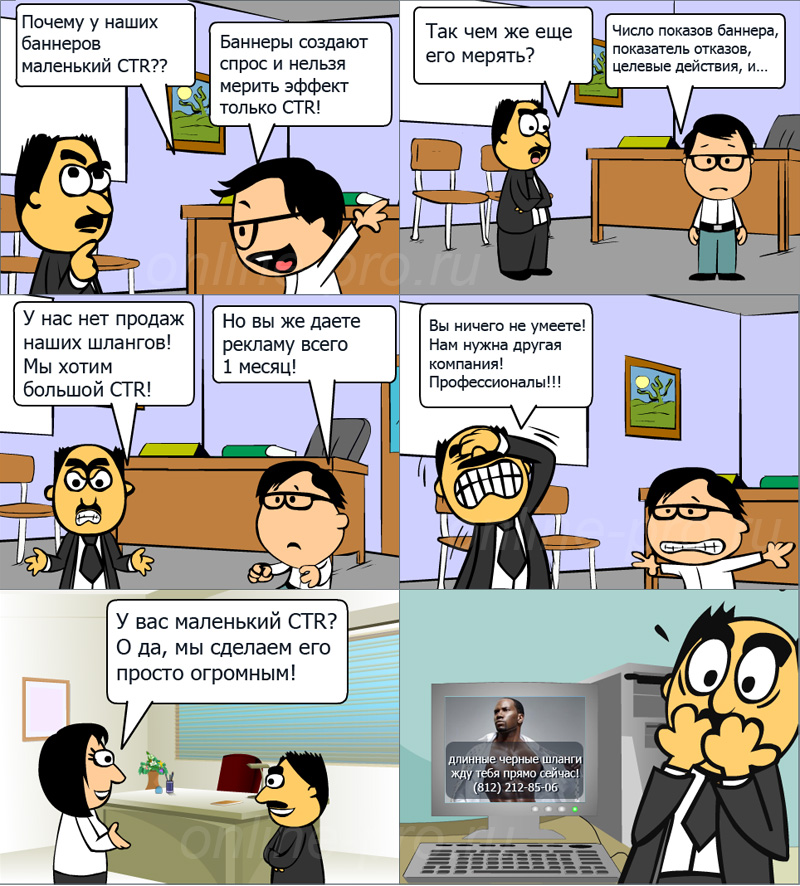Forbidden word CTR ...
Having made sure that the previous topic with the comic book pleased the Habrovsk people, we decided to lay out another topic for discussion: advertising efficiency and ways to measure it.
Online advertising agencies do not like the word CTR, because many customers interpret it as the only way to measure the effectiveness of advertising. Not important, media, contextual or any other.
Attempts to convince them that now this indicator cannot be considered in isolation from others, work poorly.
So, why can’t CTR be considered separately:
1. It can’t be used equally to evaluate different advertising methods. Say banner ads are not currently used to catch traffic. This is an image advertising that creates a demand for goods and services.
2. CTR may be large, but traffic conversion may be low. Very much depends on the type of advertising, its placement on the page and the audience of the site.
3. If applied to contextual advertising, then its CTR depends even on the opposite location of the organic issuance of the advertisement.
4. Different people, depending on age and gender, also behave differently when interacting with advertising. For example, people over 50 first look at advertisements or SERPs, and only then make the transition. The younger ones open several tabs at once and successively close them, finding the right one. And the click was already counted ... The
comic that we prepared before the New Year, but did not manage to put on the Habré to the current topic:

Online advertising agencies do not like the word CTR, because many customers interpret it as the only way to measure the effectiveness of advertising. Not important, media, contextual or any other.
Attempts to convince them that now this indicator cannot be considered in isolation from others, work poorly.
So, why can’t CTR be considered separately:
1. It can’t be used equally to evaluate different advertising methods. Say banner ads are not currently used to catch traffic. This is an image advertising that creates a demand for goods and services.
2. CTR may be large, but traffic conversion may be low. Very much depends on the type of advertising, its placement on the page and the audience of the site.
3. If applied to contextual advertising, then its CTR depends even on the opposite location of the organic issuance of the advertisement.
4. Different people, depending on age and gender, also behave differently when interacting with advertising. For example, people over 50 first look at advertisements or SERPs, and only then make the transition. The younger ones open several tabs at once and successively close them, finding the right one. And the click was already counted ... The
comic that we prepared before the New Year, but did not manage to put on the Habré to the current topic:

